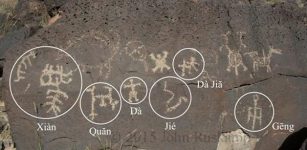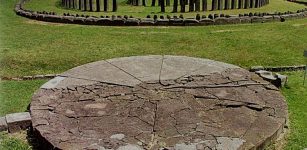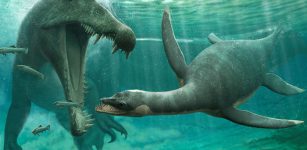Incredible Giant String-Like Sea Creature Spotted In Australia Stuns Scientists
Don Wood – MessageToEagle.com – Nature is awesome, and it never ceases to surprise us. Studying unusual lifeforms in the oceans can be very rewarding as we can catch a glimpse of remarkable animals, we’ never expect to see.
Scientists were stunned when they spotted this incredible, giant string-like sea creature in Australia.
The research team aboard the RV Falkor, which is the flagship research vessel of the Schmidt Ocean Institute (SCI), managed to catch it on footage and the sight is stunning.

A screenshot of the siphonophore video. Credit: Schmidt Ocean Institute
According to the SCI researchers, the sea creature is a type of siphonophore known as Apolemia. It was observed in a deep-sea environment known as the Ningaloo Canyons.
“Check out this beautiful *giant* siphonophore Apolemia recorded on #NingalooCanyons expedition. It seems likely that this specimen is the largest ever recorded, and in strange UFO-like feeding posture,” SCI wrote in a Twitter post.
The sea organism resembles a long piece of string, siphonophores—a group of creatures related to jellyfish and corals. Although it looks just like one organism, it’s actually made up of many thousands of individual, specialized clones that come together to form a single entity.
“The entire creature is much, much longer. The crew is estimating it to be more than 120 meters in total length—possibly over 390 feet long,” Logan Mock-Bunting, a spokesperson for the Schmidt Ocean Institute, told Newsweek.
“We are in the process of outside confirmation of these measurements.”
Siphonophores like this one are deep-sea predators that lie in wait for unfortunate animals to come into contact with the stinging cells found on some of the specialized clones.
See also:
Bizarre Mermaid-Like Creatures Photographed Underwater
Mysterious Never-Before-Seen Underwater Creature Captured On Camera In The Indian Ocean
Magnificent Underwater World With Otherworldly Mirror Pools Discovered In The Gulf Of California
“This animal is a kind of jelly, called a siphonophore. It’s made of millions of interconnected clones, like if the Borg and the Clone Wars had a baby together.
There are about a dozen different jobs a clone can do in the colony, and each clone is specialized to a particular task,” Rebecca Helm, an assistant professor at the University of North Carolina Asheville who saw the SCI video, wrote in a Twitter thread.
“I’ve gone on numerous expeditions and have never, EVER, seen anything like this. Let me tell you what this is and why it is blowing my mind,” she said. “Most of the siphonophore colonies I’ve seen are maybe 20 centimeters long, maybe a meter. But THIS animal is massive. AND not just massive, the colony is exhibiting a stunning behavior: it’s hunting.”
Omg I have CHILLS. This is an ANIMAL. I’m guessing it’s over a hundred feet long, forming a spiral in the middle of the deep sea. I’ve gone on numerous expeditions and have never, EVER, seen anything like this. Let me tell you what this is and why it is blowing my mind [a thread] https://t.co/6SoWmfxsJH
— Open Ocean Exploration (@RebeccaRHelm) April 6, 2020
“Their slender bodies hang with a single long tentacle dangling like a hook-studded fishing line,” Helm said. “A siphonophore colony in a line creates a curtain of deadly tentacles in the open ocean, but in THIS case, the animal is hunting in a galaxy-like spiral, the long wisp-like tentacles draped below. And the colony does not need to move to feed.”
“Once a clone captures its prey—a fish or crustacean—it will reel it to the colony & other clones that work as mouths will surround it. Often many swallowing it at once. Once they prey is digested, they’ll send the nutrients through a long digestive tract that travels down the whole colony, so that every other clone can use the nutrients. In this way, this siphonophore may remain still and feed for a long time, and I mean LONG,” she said.
“Everything in the deep sea grows incredibly slowly. It’s only a few degrees above freezing, life takes time to grow,” she said.
“This is one of the largest and most stunning and pristine siphonophores that I’ve ever seen. And to think, there are millions, probably billions of underwater siphonophore galaxies out there just like this one.
Siphonophores are not rare, just fragile and remote. As we explore the ocean’s more, who knows what other creatures we will see.”
Written by Don Wood – MessageToEagle.com Staff










